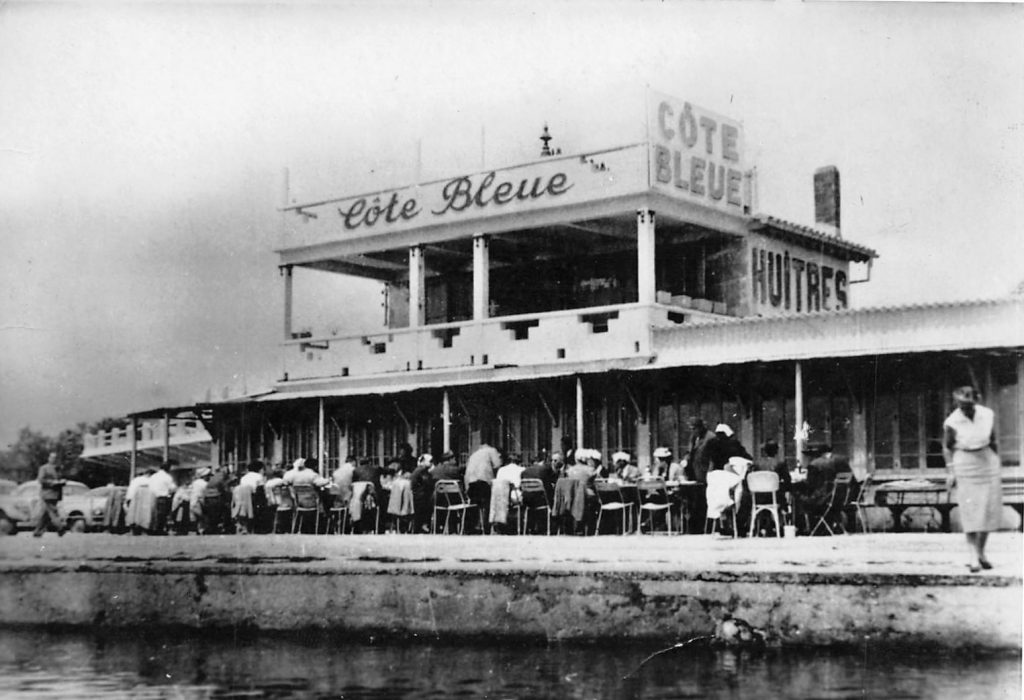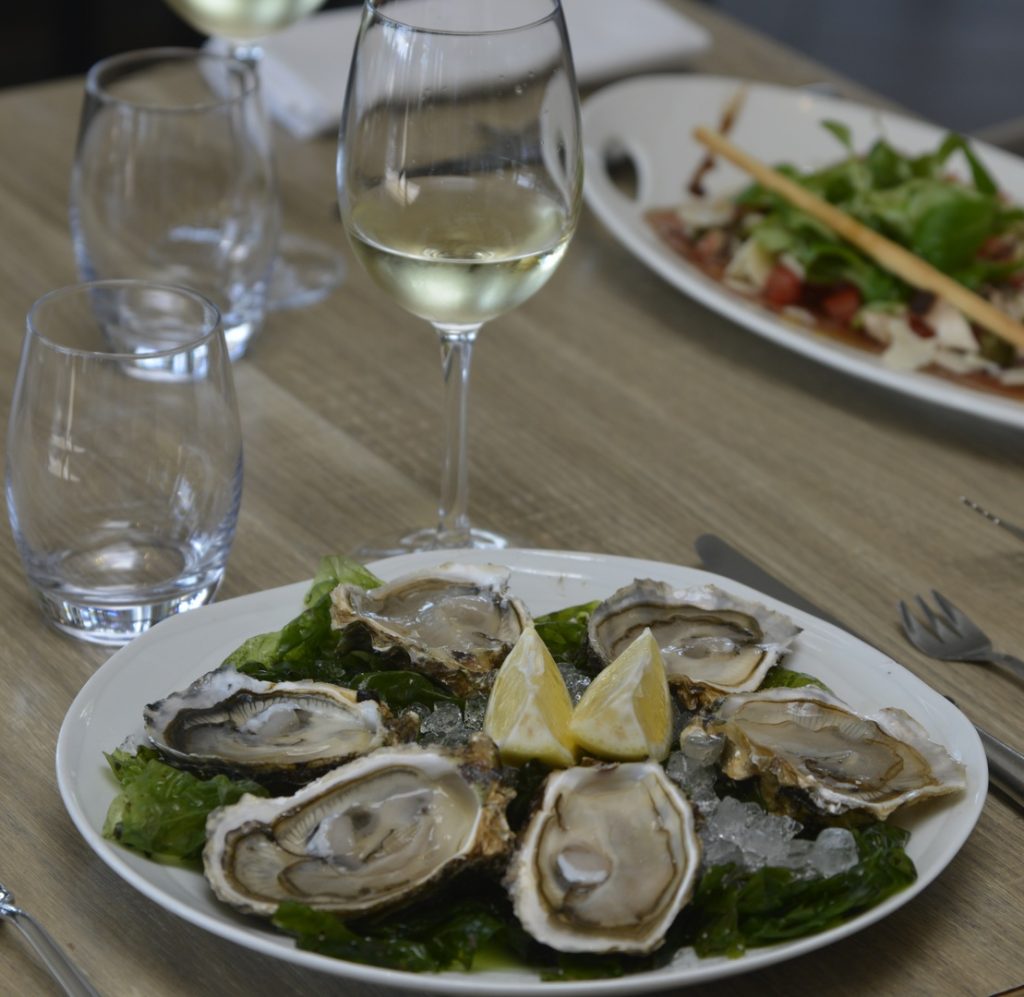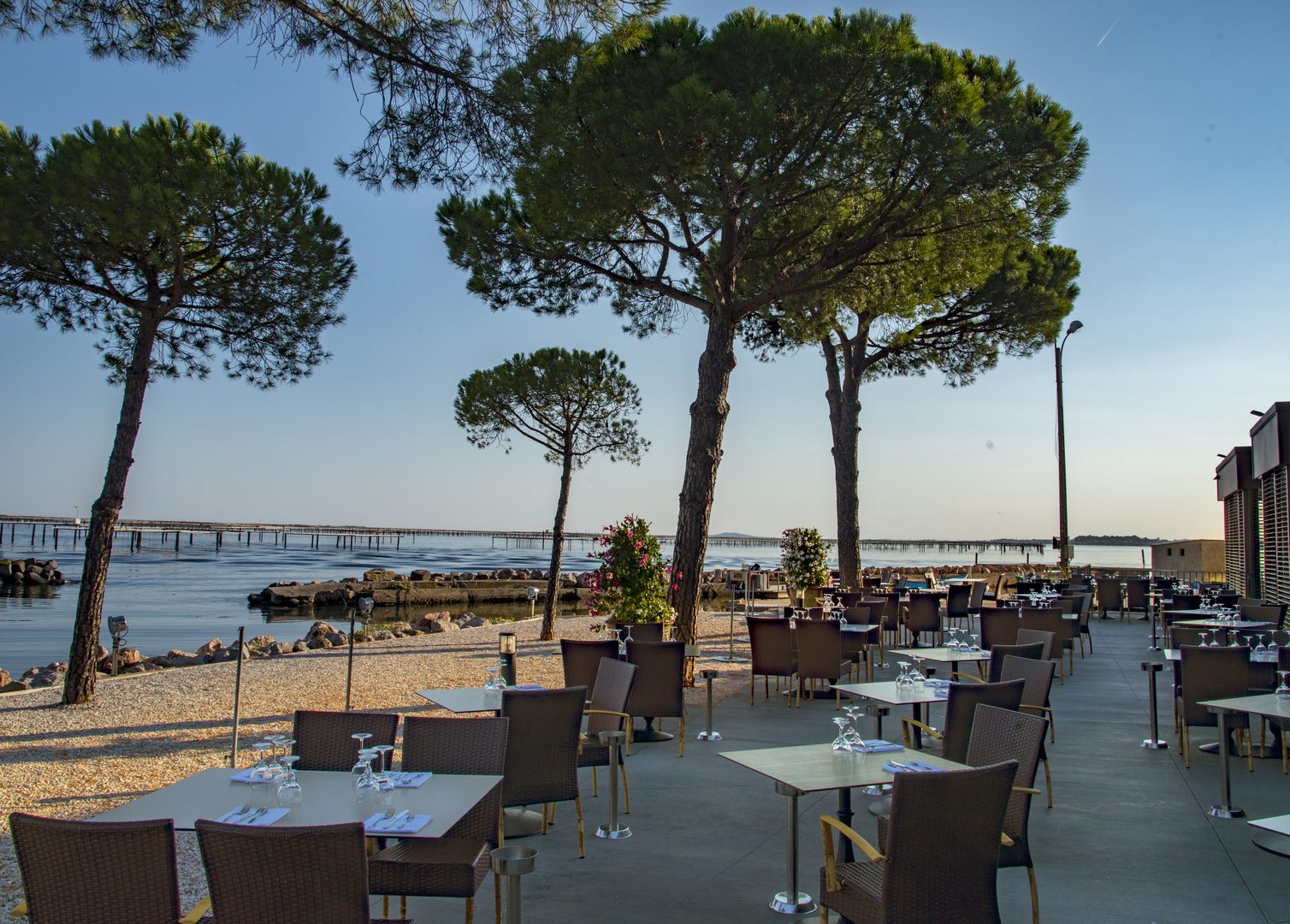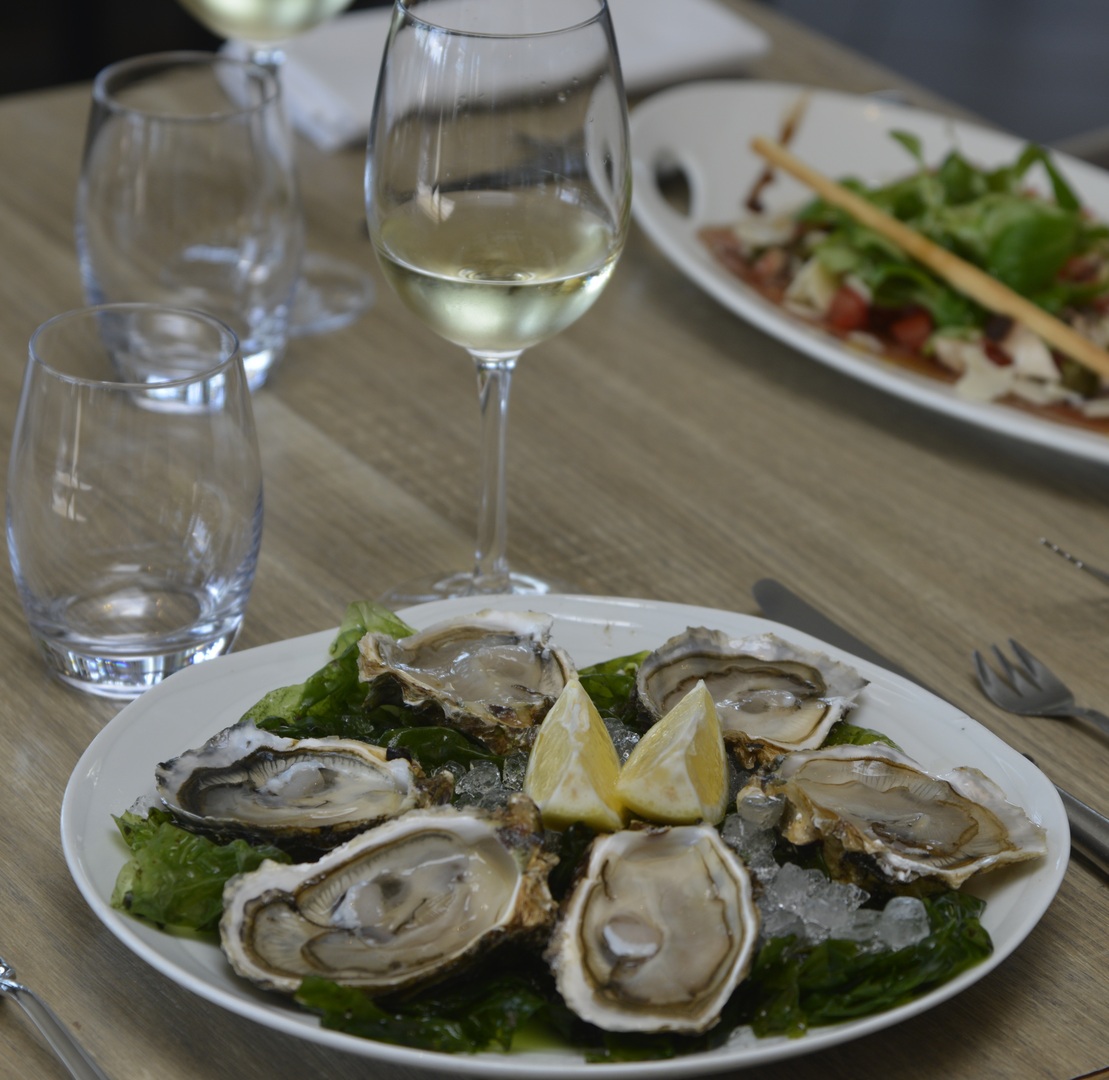La Côte Bleue
The history of the Côte Bleue is closely linked to the culture of oysters and mussels, in the very heart of the Thau Basin.
It all started with attempts to raise mussels in the canals of Sète in 1896 by Mr. Lafitte.
In 1904, start of oyster farming by Mr. Tudesq. Oyster catching was done on perforated cement pyramids; it was mainly about the flat oyster, then sovereign in the Thau Basin. Mr. Tudesq, a mason by trade, developed the bonding of oysters with cement, on mangrove or azobé bars, we gradually witnessed the development of the cupped oyster.
The oyster spat comes from the Marennes-Oléron and Arcachon regions.


He built the Côte Bleue tasting in 1925, which is when “tasting” expanded.
At the beginning, oysters were sold by the kg, as today, because Mr. Tudesq registered the “Côte Bleue” brand which was continued by his successor Mr. Archimbeau René, then by the Archimbeau family and children. This brand is renewed every 10 years.
The “tasting” was sold by Mrs. Tudesq (who succeeded Mr. Tudesq, who died in 1948) to Mr. and Mrs. Archimbeau René in 1961. Significant work was carried out in 1972 and in 2016/2017 until the present day to the layout of the various rooms and kitchens.
The construction of the Hotel was undertaken from 1969 to 1971, receiving the first guests in July of the same year. Accessibility work was carried out in 2018.
The Shellfish Production and Marketing Mas was built in 1967 and ceased its activity in 2017.
Bouzigues
Bouzigues is a small village of typically Languedoc fishermen and oyster farmers, with its marina, its unique museum retracing the history of shellfish farming in the Etang de Thau, its church, its promenade along the water, and for sports courses in scrubland and tennis courts.
Nearby, (15 km) visit the town of Sète with the fishing port (the 1st in the Mediterranean), the museum dedicated to Georges Brassens, the child of the Country, and its beaches on the banks of the Big Blue.
Discovery of the Hérault hinterland through renowned sites (Abbayes and archaeological sites) natural spaces such as Hérault gorges, natural caves (around 30 to 50 km)
Savor the artisanal products (olive oil from the Clermont l’Hérault Olive Cooperative www.farm goats called “pélardon” etc.
Taste the regional white, red and rosé wines of Languedoc without forgetting the delicious Muscat de Frontignan and Saint Jean de Minervois, they are worth the detour. (Côteaux du Languedoc Mas de Saporta).




